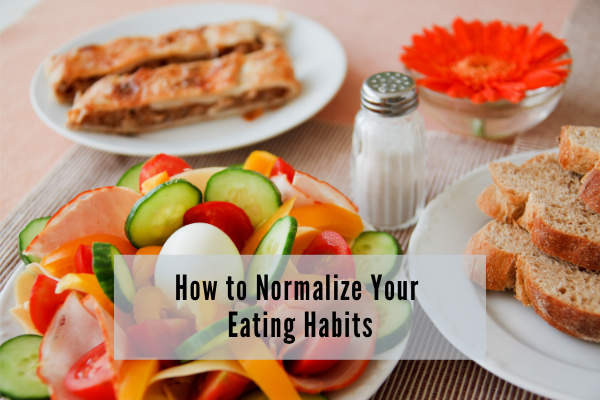
Normalized eating may seem like an odd topic to have to cover, but bear with me.
First, I’d like to tell you a quick story:
I was out in beautiful Lake Louise this past summer, camping with my older brother and his two kids. We had gotten up early that morning to beat the crowds to Moraine Lake and catch the sunrise up over the lake. We ate our breakfasts and then I headed out for a steep hike while the kids and my brother played around the lake.
I had snacks on my hike, but when I got back to the campground, I was still hungry. So I grabbed my water bottle and what was left of the bag of all dressed chips and sat at the picnic table to eat. My brother looked up at me and said “You’re the coolest dietitian eating chips at 10:30 am”.
We laughed, and agreed that it’s true, but then it got me thinking.
Eating what I want, eating when I am hungry, and eating what is available near me, is NOT culturally accepted or “normal”. What I was doing is actually an odd thing to do for most people.
Why is that?
Normalized eating isn’t normal anymore
Normalized Eating, or intuitive eating, is the behavior of eating when you are hungry and stopping when you are full or satisfied. Normalized eating can also include eating what you want because you want it, even if you aren’t hungry in that moment. Normalized eating includes eating all the foods that you enjoy and that make you feel good. Normalized eating includes socializing around food. Normalized eating doesn’t have a schedule or rules to follow because it is a little different for every person.
What is more normal for many of us can actually be disordered eating because it is driven by food rules and putting food into “good” or “bad” categories. Unfortunately, we live in a world where our eating behaviours develop from an early age to include learning food rules. We learn to survive in a food culture where overly controlled eating is actually praised.
a variety of dishes from salads to desserts are displayed menu style
How can you move more towards normalized eating?
Pay attention to what food rules guide your current eating behaviours.
Ask yourself why you are eating a certain food. Are you eating it because you like it? Or because it’s healthy? Or because it is low calorie or high protein?
Pay attention to your body cues.
Are you hungry? Are you full? What do those cues feel like for you in your body? Do you get stomach rumbles or foggy brain or have difficulty concentrating? Do you feel not hungry anymore or feel too full?
Pay attention to the messaging around you.
Are other people encouraging rigid styles of eating? Do the people around you count calories or follow a specific diet?
Most importantly, remember that normalized eating or intuitive eating is different for everyone. Make sure that you are not basing how you eat off of what other people are doing.
The goal is to improve your relationship with food. You can eat what you want, lose the food rules, and choose food for flavor, fun and health.
You may find these other blog posts of interest if you want to learn more about normalized eating:
Intuitive Eating 101: Freedom from Dieting for Weight Loss
Lose the Rules and Become an Intuitive Eater
Disclaimer
*Normalized eating or intuitive eating is not an appropriate strategy for many persons currently suffering with an eating disorder. Moving towards normalized eating as you get further into your recovery is a great goal and one that should be supported with the help of a registered dietitian who specializes in working with clients who have eating disorders.